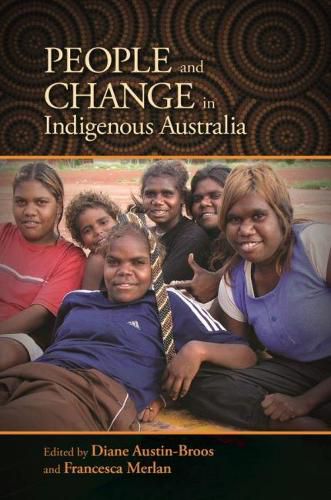Readings Newsletter
Become a Readings Member to make your shopping experience even easier.
Sign in or sign up for free!
You’re not far away from qualifying for FREE standard shipping within Australia
You’ve qualified for FREE standard shipping within Australia
The cart is loading…






This title is printed to order. This book may have been self-published. If so, we cannot guarantee the quality of the content. In the main most books will have gone through the editing process however some may not. We therefore suggest that you be aware of this before ordering this book. If in doubt check either the author or publisher’s details as we are unable to accept any returns unless they are faulty. Please contact us if you have any questions.
People and Change in Australia arose from a conviction that more needs to be done in anthropology to give a fuller sense of the changing lives and circumstances of Australian indigenous communities and people. Much anthropological and public discussion remains embedded in traditionalizing views of indigenous people, and in accounts that seem to underline essential and apparently timeless difference. In this volume the editors and contributors assume that the person is socially defined and reconfigured as contexts change, both immediate and historical.
Essays in this collection are grounded in Australian locales commonly termed remote. These indigenous communities were largely established as residential concentrations by Australian governments, some first as missions, most in areas that many of the indigenous people involved consider their homelands. A number of these settlements were located in proximity to settler industries including pastoralism, market-gardening, and mining.
These are the locales that many non-indigenous Australians think of as the homes of the most traditional indigenous communities and people. The contributors discuss the changing circumstances of indigenous people who originate from such places. Some remain, while others travel far afield. The accounts reveal a diversity of experiences and histories that involve major dynamics of disembedding from country and home locales, and re-embedding in new contexts, and reconfigurations of relatedness. The essays explore dimensions of change and continuity in childhood experience and socialization in a desert community; the influence of Christianity in fostering both individuation and relatedness in northeast Arnhem Land; the diaspora of Central Australian Warlpiri people to cities and the forms of life and livelihood they make there; adolescent experiences of schooling away from home communities; youth in kin-based heavy metal gangs configuring new identities, and indigenous people of southeast Australia reflecting on whether an Aboriginal way can be sustained.
The volume takes a step toward understanding the relation between changing circumstances and changing lives of indigenous Australians today and provides a sense of the quality and the feel of those lives.
$9.00 standard shipping within Australia
FREE standard shipping within Australia for orders over $100.00
Express & International shipping calculated at checkout
This title is printed to order. This book may have been self-published. If so, we cannot guarantee the quality of the content. In the main most books will have gone through the editing process however some may not. We therefore suggest that you be aware of this before ordering this book. If in doubt check either the author or publisher’s details as we are unable to accept any returns unless they are faulty. Please contact us if you have any questions.
People and Change in Australia arose from a conviction that more needs to be done in anthropology to give a fuller sense of the changing lives and circumstances of Australian indigenous communities and people. Much anthropological and public discussion remains embedded in traditionalizing views of indigenous people, and in accounts that seem to underline essential and apparently timeless difference. In this volume the editors and contributors assume that the person is socially defined and reconfigured as contexts change, both immediate and historical.
Essays in this collection are grounded in Australian locales commonly termed remote. These indigenous communities were largely established as residential concentrations by Australian governments, some first as missions, most in areas that many of the indigenous people involved consider their homelands. A number of these settlements were located in proximity to settler industries including pastoralism, market-gardening, and mining.
These are the locales that many non-indigenous Australians think of as the homes of the most traditional indigenous communities and people. The contributors discuss the changing circumstances of indigenous people who originate from such places. Some remain, while others travel far afield. The accounts reveal a diversity of experiences and histories that involve major dynamics of disembedding from country and home locales, and re-embedding in new contexts, and reconfigurations of relatedness. The essays explore dimensions of change and continuity in childhood experience and socialization in a desert community; the influence of Christianity in fostering both individuation and relatedness in northeast Arnhem Land; the diaspora of Central Australian Warlpiri people to cities and the forms of life and livelihood they make there; adolescent experiences of schooling away from home communities; youth in kin-based heavy metal gangs configuring new identities, and indigenous people of southeast Australia reflecting on whether an Aboriginal way can be sustained.
The volume takes a step toward understanding the relation between changing circumstances and changing lives of indigenous Australians today and provides a sense of the quality and the feel of those lives.